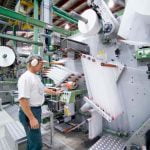
Mumbai: After offering discounts for 11 years, General Insurance Corporation of India, the national reinsurer, has increased premiums payable in eight industrial categories where claims have been high.
The premium on manufacturing rubber goods, plastics, textiles, chemicals (below 32 degrees C flashpoint), besides transporter godowns, steel factories and thermal power plants have been increased based on an analysis of the burning-cost ratio by the Insurance Information Bureau (IIB). The rates are going up by three to nine times in some segments.
The state-owned reinsurer, known as GIC Re, has asked general insurance companies to add the cost of management to the IIB-identified rates and accordingly provide quotations to their corporate clients if they want treaty arrangements with it.
While insurance costs will increase for companies, the higher premium will correct a distortion in individual policy rates.
The regulator has been asking insurers to follow the burning cost ratio analysis method while working out the commercial premium rates. Burning-cost ratio in insurance is the estimated cost of future claims based on past experience.
“IIB has worked out burn cost and GIC Re has picked up eight occupancies where claim ratio is above 200 per cent,” said Alice Vaidyan, chairman of GIC Re.
“We have to think about retail policyholders, who are subsidising corporate. Companies have enjoyed discounts of over 99 per cent for 11 years. The Indian general insurance market has a combined ratio of over 100 per cent and there is a need for correction. When reinsurance companies are making losses, they will pass it on.”
The combined ratio is a measure of profitability of insurance companies. It is the ratio of claims and business costs divided by the premium earned. A combined ratio of less than 100 per cent indicates the company is making a profit by underwriting business.
Companies have started complaining about the premium increase. If they don’t agree with GIC Re’s pricing, they can choose from 11 other reinsurance companies. For GIC Re, these eight occupancies are part of the property insurance segment, which accounts for only 8 per cent of its portfolio.
“Non-industrial risks will not be impacted. However, for smaller companies, the rates were really low and they may see rates doubling,” said Sanjay Datta, head of underwriting at ICICI Lombard General Insurance. He said units that had no claims will be affected too because the entire sector is being re-rated.
“There is bound to be turbulence in the insurance industry, particularly entities who are now facing the increased premium rates of up to 10 times. Those hit by the steep rise in premiums will now try to scramble their way out,” said Sumit Bohra, CEO of IndiaNivesh Insurance Brokers. “Nearly 35 industry segments categorised for new rates played a major role in these losses to the insurance industry.”
Most insurance companies have incurred losses consistently in their fire portfolios. The freeing of premium rates in 2007 resulted in unhealthy competition, with insurers offering high discounts to grab market share. In some cases, standard fire policies were handed out free with premium charged only for addon covers to procure business from other insurers.
The fallout of such discounts has been borne by individuals, whose premiums have increased continuously. That has led to a huge distortion, with individuals and retail policyholders paying higher premiums per policy than corporate account holders with bargaining power.
[“source=economictimes.indiatimes”]




